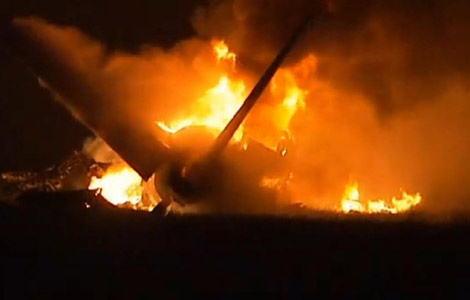Drive to close obsolete capacity will intensify
Updated: 2013-08-15 07:21
By Wei Tian in Shanghai (China Daily)
|
||||||||
China will step up efforts to shutter obsolete industrial capacity as it strives to increase energy efficiency and accelerate its economic transition, said Minister of Industry and Information Technology Miao Wei on Tuesday.
A revised list of closures will be released soon, Miao said. MIIT will urge the companies involved to dismantle obsolete equipment so that excess capacity can be eliminated by 2014, a year ahead of schedule.
"The closures will result in issues such as settlements for laid-off workers, loss of assets and dealing with debts. Thus, the move will affect local governments' revenue and employment rates in the short term," Miao told the Xinhua News Agency.
However, the closure program will also free up resources, energy, land and market for advanced capacity, he added.
The ministry announced the first batch of closures on July 25, involving 1,294 companies (including 19 listed companies).
The closures involve 19 industries such as copper and alumina smelting. Enterprises on the list were told to close the capacity by Sept 30 and demolish the facilities by Dec 31.
Relocation of capacity elsewhere in the country was strictly prohibited.
The list was regarded as a vital step for the central government in taking practical steps to solve the overcapacity issue, which has become a major challenge for the world's second-largest economy.
According to the China Nonferrous Metal Industry Association, the capacity utilization rate of alumina facilities was only 72.5 percent in 2012. Rates for steel, cement and plate glass were also lower than 75 percent.
China's energy consumption per unit of GDP, a measure known as energy intensity, declined 3.4 percent in the first half of this year, the National Development and Reform Commission said on Friday.
China aims to cut its energy intensity by 16 percent during the 12th Five-Year Plan (2011-15), according to an energy development plan released by the State Council, China's cabinet, at the beginning of the year.
According to National Energy Administration data posted on Wednesday, power consumption rose 8.8 percent year-on-year in the first seven months.
The economy expanded 7.6 percent in the first half.
"We're working with other departments on an overall plan to resolve overcapacity, to promote the elimination of outdated capacity and support mergers and reorganizations in key sectors," Miao said.
Fu Yugang, executive president of the SIFL Institute, a Shanghai-based research institution, said the government had long been determined to resolve the problem of excess capacity, but its efforts had yielded few results.
Fu noted that a similar list of closures was released in April 2010 involving nine industries. These same nine appear among the 19 industries on the latest list, he said.
Large industrial projects "are generally welcomed by local officials because they can generate huge GDP the first task in resolving overcapacity is to lessen local governments' role in developing local economies, but it can't be done overnight in a GDP-oriented country like China.
"Therefore, the task rests on the shoulders of financial institutions, and banks should reevaluate the risks of non-profitable projects and stop extending credit. Although this will lead to a rise in bad loans, it's a cost they must bear in the short term to avoid larger risks over the long term," he said.
In June, the central government halted new credit for projects in industries with severe overcapacity. As a result, several steel enterprises were reported to have suspended production as their funding conditions deteriorated.
With the role of outdated industries in the economy shrinking, Miao said consumption in information technology will be a key area for development in the second half of the year.
weitian@chinadaily.com.cn
(China Daily USA 08/15/2013 page14)

 Spielberg has desire to work with Zhang Yimou
Spielberg has desire to work with Zhang Yimou
 Requiem ceremony for former comfort woman
Requiem ceremony for former comfort woman
 Egypt forces crush protesters
Egypt forces crush protesters
 Two killed in fiery crash of UPS cargo jet
Two killed in fiery crash of UPS cargo jet
 Yao dreams of sports for fun with towering charity
Yao dreams of sports for fun with towering charity
 Re-enacting ancestors' journey to the west
Re-enacting ancestors' journey to the west
 Special bus seat for breast-feeding mothers
Special bus seat for breast-feeding mothers
 Northern exposure
Northern exposure
Most Viewed
Editor's Picks

|

|

|

|

|

|
Today's Top News
US asks China's help on DPRK issues
Movie tax flack is settled
Manning 'sorry' for US secrets breach
China to be world's No 1 consumer
Gold rises on physical buying from Asia
Millionaires hold dimmer view: Survey
China to probe foreign automakers
Snowden case not to affect US-Russia talks
US Weekly

|

|





